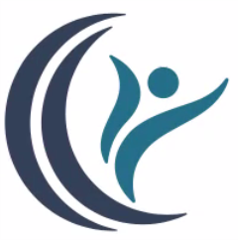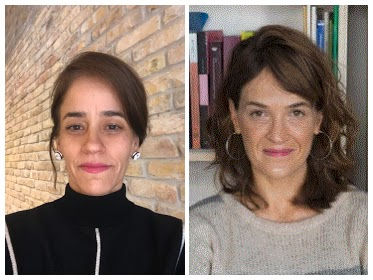The UN Human Rights Committee decides: Girls have a right to be girls and not mothers
- Human Rights in Context

- Jul 8
- 10 min read

Ms Carmen Cecilia Martínez (left)
Carmen is the Associate Director of Legal Strategies for Latin America and the Caribbean at the Center for Reproductive Rights Ms Milagro Valverde (right)
Milagro Valverde is a Legal Adviser for Latin America and the Caribbean at the Center for Reproductive Rights.
On January 20, 2025, the United Nations Human Rights Committee (The Committee) published its decisions in the cases of Norma v. Ecuador, Susana v. Nicaragua, and Lucía v. Nicaragua. On June 5, 2025, it published the decision of the Fátima v. Guatemala case. Altogether, all of these cases are known as the Niñas No Madres cases. In these historic rulings, the Committee found Ecuador, Nicaragua and Guatemala responsible for violating multiple human rights by subjecting young girls to forced pregnancies and motherhood after they were victims of sexual violence. These decisions reaffirmed that the absolute criminalization of abortion constitutes a form of gender-based violence and discrimination.
Introduction
The case context: violence and forced motherhood
Norma, Susana, Lucía and Fátima were four girls who endured sexual violence, specifically rape, in their respective countries, resulting in forced pregnancies without access to justice and comprehensive healthcare. Their cases illustrate the systematic failure of judicial and healthcare institutions to uphold their rights, as well as the profound consequences of restrictive reproductive health policies. Each case reveals a harrowing reality of state neglect and institutionalized discrimination against survivors of sexual violence.
In 2013, Norma, a young girl from Ecuador, became pregnant at age 13 after suffering repeated sexual abuse perpetrated by her father. It is noteworthy that he had been reported in the past for sexual violence against another girl in their family. When she sought medical assistance, she was denied an abortion, despite legal provisions in Ecuador that allow abortion under limited circumstances. Procedural barriers, as requiring her to present a criminal claim, and systemic failures, as the lack of information concerning her rights, prevented her from accessing timely reproductive healthcare. Her case underscores how the gap between legal standards that permit access to safe and legal abortion, and the simultaneous criminalization of abortion, impacts practical implementation—resulting in severe rights violations and leaving survivors of violence without protection or recourse.
Lucía and Susana, both from Nicaragua, faced similarly devastating experiences at the age of 13 as a result of the country’s total ban on abortion. In 2013 Lucía was raped by a priest in her community and forced to carry her pregnancy to term, enduring immense psychological and physical trauma without access to any support systems. The state not only failed to provide her with healthcare but also ignored its obligation to investigate and prosecute the sexual violence she suffered. In 2014, Susana was denied the right to terminate her pregnancy despite suffering rape – perpetrated by her grandfather. The rigid legal framework in Nicaragua, which criminalizes abortion under all circumstances, compounded the suffering of these young girls, exposing them to additional harm, social stigma, and economic hardship.
Finally, Fátima was raped in 2009 and 2010 by her school’s former director, benefiting from the trust deposited in him due to the provision of economic support in favour of her family while he had an authoritative position over her. The rapes resulted in pregnancy. Despite there being evidence of serious impacts on Fatima’s wellbeing and the fact that the pregnancy was of a very high risk, access to abortion was impossible. She became a mother at age 14, burdened with a forced motherhood and from stigma from her peers, school authorities, and society.

The legal framework in Ecuador, Guatemala and Nicaragua significantly contributed to these human rights violations. In Ecuador, by 2013, at the time of the facts of the case, abortion was permitted only under very limited circumstances, including when the pregnancy posed a risk to the woman's life or health, or when it resulted from the rape of a woman with a mental disability. This legal framework partially changed in 2022 after the Ecuadorean legislature included a new exception to legal abortion by decriminalizing it in cases of rape. Nonetheless, the criminal regulation of abortion continues to exist, and as a consequence, legal and procedural barriers, such as the lack of provision of information, false perceptions of the legality of abortion in a particular case, or stigma, have made access to legal abortion nearly impossible for many survivors of sexual violence, including girls. Regarding Guatemala, it establishes in the Criminal Code that abortion may be permissible to prevent a risk to the mother’s life, but it is restrictively interpreted making access to abortion impossible. In Nicaragua, the situation is even more restrictive, as abortion is completely criminalized under all circumstances. This total ban has resulted in systematic human rights violations, forcing individuals in need of abortion care—including survivors of sexual violence—into forced pregnancy and motherhood, and exposing them to serious health risks.
The cases of Norma, Fátima, Susana, and Lucía must be understood within the broader socio-political context of reproductive rights in Latin America. Despite WHO issuing regulations recommending full decriminalization of abortion in 2022, others maintain or strengthen restrictive policies. In Ecuador, Guatemalaand Nicaragua, deeply rooted patriarchal norms, combined with political and religious influences, have contributed to policies that systematically deny women and girls the right to make decisions about their bodies.
In Nicaragua, the absolute ban on abortion is reflective of a broader trend of state control over reproductive rights, where legal frameworks are used to enforce gendered social roles. The complete. A similar situation occurs in Guatemala, where the law technically allows abortion when the life of the woman is at risk. However, in practice, the legal system operates much like in Nicaragua, effectively criminalizing abortion and exacerbating existing inequalities. This disproportionally impacts young girls from rural and impoverished backgrounds, who often lack access to even the most basic reproductive health services. In Ecuador, the failure to implement its own legal framework — which permits abortion in specific cases—underscores the gap between legal standards and actual access to reproductive healthcare.
Additionally, all three countries have faced international scrutiny for their treatment of women’s rights and reproductive freedoms. International Human Rights Mechanisms (for example, the Special Rapporteur on the right to health, on violence against women, the CEDAW Committee, among others) have repeatedly highlighted the risks posed by restrictive abortion laws in these countries, linking them to increased maternal mortality, unsafe abortions, and gender-based violence. The cases of Norma, Fátima, Susana, and Lucía exemplify these dangers, illustrating the dire consequences of laws that prioritize ideological agendas over fundamental human rights.
The cases were submitted before the Human Rights Committee in May 2019 as part of a coordinated strategy by the Center for Reproductive Rights, Planned Parenthood Global, Surkuna, Mujeres Transformando el Mundo, and a Nicaraguan grassroots organization. In all cases, the Committee recognized that there were no effective domestic legal remedies to challenge the denial of abortion. In the case of Nicaragua, the total prohibition was sufficient evidence to conclude that access to abortion was not possible. In Ecuador, the State argued that an acción de protección might have been a pending remedy to exhaust, but it was deemed ineffective due to documented delays in resolving such cases. Guatemala not only accepted that its law—as currently written—is not designed to allow girls who are survivors of sexual violence to access abortion, but also did not challenge the lack of exhaustion of domestic remedies related to access to abortion. Instead, it focused on the criminal proceedings against the perpetrator. That challenge was ultimately unsuccessful due to a delay of over 12 years without a final decision in those proceedings.
The UN Human Rights Committee: key findings
The Human Rights Committee identified several crucial human rights violations in its rulings on the cases of Norma, Susana, and Lucía:
Full Ban on Abortion: The Committee highlighted that Nicaragua’s total ban on abortion constitutes a direct violation of international human rights standards. In the cases of Susana and Lucía, the Committee found that the absolute prohibition on abortion exacerbated the physical and psychological suffering of the victims and involved an unreasonable interference by the State party in the girl’s decision. The Committee also determined that the criminalization of abortion disproportionately affects marginalized girls, particularly those living in poverty and rural areas, who lack access to reproductive healthcare and legal recourse.
Right to Life, Health, and a Dignified Life: The Committee found that the denial of access to abortion in these cases jeopardized the lives and health of the victims, exposing them to severe physical and psychological harm. The Committee concluded that forcing young girls to carry pregnancies to term after experiencing sexual violence amounted to a breach of the right to life as envisioned in the ICCPR. Furthermore, the Committee emphasised the right to a dignified life, recognising that forced motherhood deprives victims of their autonomy, restricts their ability to pursue education and economic stability, and exacerbates their vulnerability to further violence and discrimination.
Right to Privacy and Access to Information: By refusing access to abortion, the state interfered with the victims’ bodily autonomy, violating their right to privacy and personal integrity. The Committee also underscored the critical importance of access to information, recognising that the lack of comprehensive, evidence-based reproductive health education exacerbated the violations suffered by the victims. The failure of states to provide accurate and timely information about sexual and reproductive rights, as well as the legal options available, further restricted the victims' ability to make informed decisions about their own bodies and futures.
Gender and Intersectional Discrimination: The Committee determined that failing to protect girls from forced pregnancy and denying them reproductive healthcare constituted a form of gender-based discrimination. Furthermore, the Committee recognised that these violations disproportionately affected girls from marginalised communities, including those living in poverty. The intersection of gender and age compounded the harm suffered by these girls, further exacerbating their exclusion from healthcare, education, and justice systems.
Prohibition of Torture and Inhuman or Degrading Treatment: The Committee noted that the right to access abortion was not guaranteed in these cases and recalled that denying such access constitutes a violation of the right to be free from torture or cruel, inhuman, or degrading treatment—particularly when the physical or mental health of the woman is at risk. In these cases, the Committee found that the victims’ age intensified their suffering, which was even more severe because they were minors who had been subjected to sexual abuse.
The Judgment: Impact within the States and throughout the region and the Globe
The structural remedy ordered by the Human Rights Committee requires Ecuador, Guatemala and Nicaragua to i) adapt its legislations to ensure that all women victims of sexual violence, particularly girls who are victims of incest or rape, and when their health is at risk have effective access to abortion, ii) adopt policies to fight sexual violence through all means, including education and capacity building in the Judiciary; and, among others, iii) create capacity building measures for healthcare providers on effective actions in cases of risks of sexual violence cases.
While the structural remedy allows for flexibility in its implementation, there are clear obligations that Ecuador, Guatemala and Nicaragua must fulfil. These include enacting legislative reforms that align with international human rights standards, ensuring the availability of safe abortion services, and strengthening mechanisms for survivors of sexual violence to access justice. Additionally, the states must actively take all necessary measures to prevent sexual violence, including through the improvement of comprehensive sexuality education, and must remove discriminatory policies and practices that obstruct reproductive autonomy. Compliance with these measures is not optional but a necessary step towards rectifying the severe human rights violations identified by the Committee.
Beyond the direct implementation of these rulings, the decisions set a critical
precedent for the broader Latin American region and beyond. The authoritative interpretations of the International Covenant on Civil and Political Rights made by the Human Rights Committee create a basis for further legal challenges and advocacy efforts aimed at repealing restrictive abortion laws in other jurisdictions. We consider that the current proceedings challenging abortion restrictions, for instance, in Brazil, Ecuador, several states from the USA, and before the IACHR, will benefit significantly from these findings.
Furthermore, the findings reinforce the importance of ensuring reproductive autonomy and highlight that denying access to abortion is itself a form of discrimination that disproportionately impacts the most vulnerable sectors of society. The legal and advocacy communities can leverage these rulings to demand accountability from governments and to push for concrete policy changes that will make reproductive healthcare more accessible and just.
This is a particularly timely decision, especially in light of the recent 2024 judgment by the Inter-American Court of Human Rights (The Court) in the Beatriz case, where the Court abstained from addressing the issue of abortion. In contrast, the Human Rights Committee’s decisions take a firm stance, establishing a significant precedent in the ongoing debate over abortion in international human rights law. Although the Committee’s position does not fully align with the current public health discourse—as reflected in the WHO’s 2022 Guidelines recommending the full decriminalization of abortion—these rulings reinforce the Committee’s role as a key voice in shaping global standards for reproductive rights and ensuring that international obligations related to gender justice and bodily autonomy are upheld.
Conclusion
The Human Rights Committee’s recognition that forced motherhood constitutes a human rights violation is a victory for the feminist movement and for those who have tirelessly advocated for reproductive rights. However, the fight is far from over. The enforcement of these decisions will be crucial to ensuring that no girl is ever again forced into motherhood against her will.
The voices of Norma, Fátima, Susana, and Lucía not only represent the suffering of many girls in the region but also symbolise the potential for change. The international community has a responsibility to demand compliance with these rulings and to push for all necessary measures to ensure that girls are protected from violence and can exercise their right to make decisions about their own bodies and futures.
The Human Rights in Context Blog is a platform that provides an academic space for discussion for those interested in human rights, democracy, and the rule of law. We are always interested in well-written and thoughtful comments and analyses on topical events or developments. Scholars from all disciplines, students, researchers, international and national civil servants, legislators and politicians, legal practitioners and judges are welcome to participate in the discussions. We warmly invite those interested in writing a post to send us an e-mail explaining briefly the relevance of the topic and your background as an expert. We will get back to you as quickly as we can. All contributors post in their individual capacity, and their opinions do not necessarily reflect the official position of Human Rights in Context, or any organisation with which the author is affiliated.



